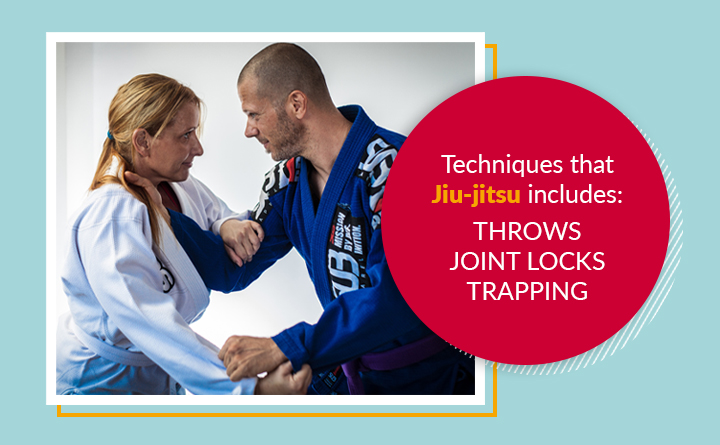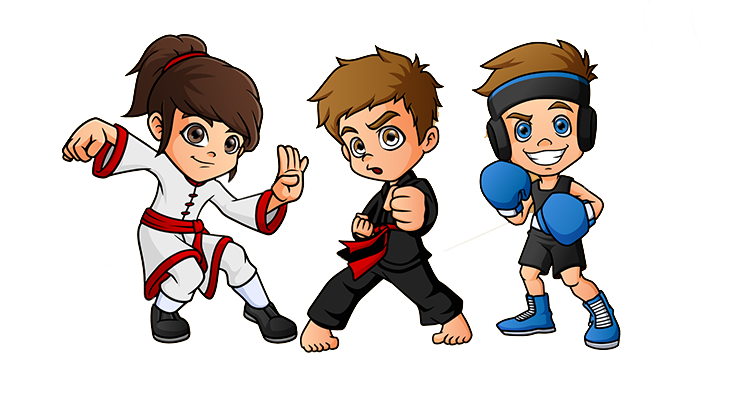Martial arts is engrained in human culture across the planet.
We’ve all seen images of the karate master completing their katas on the edge of a cliff, or the Rocky-esque boxer unloading on the heavy bag at the gym. Don’t you want to be like them? Well, maybe without the sworn enemies and grueling workouts? No sweat – we won’t have you punching slabs of meat or chasing chickens.
Whether you like the idea of the self-defense skills it provides or the mental and physical discipline it offers, you may have thought about how to learn martial arts.

We’re all busy and consumed by life’s responsibilities, therefore time is limited. If you want to know how to practice martial arts and become skilled at it, you may be curious about the timeframe. How can you learn these skills, and maybe more importantly, how long will it take?
Today you’ll learn the best way to learn martial arts in a concise timeframe, and how to tell if you’re progressing at a good rate.
Understanding The Diverse Spectrum Of Martial Arts (And Artists)
When we’re talking about how to start learning martial arts, two factors immediately come into play. The first is what kind of martial art you’re learning. The second is how fast of a learner you are.
Let’s start with the first point. There are many different martial arts. Some are based around striking, others around grappling, and some even use weapons. You probably don’t want to start out with a katana in your hand, though – just saying.
Depending on the type of martial art you’re looking to learn, the timeframe will be different. The most popular martial arts worldwide include karate, judo, jujitsu, aikido, kendo, kung fu, tae kwon do, tai chi chuan, kickboxing, and krav maga.
The same thing can be said for the type of learner you are. As a martial artist, your capacity to master the art (even the basics) on a specific timeframe is relative to your ability to learn. It is also impacted by:
- Physical Capabilities: Your level of vitality impacts your ability to learn. Obviously, being in better shape and having less bodily injuries or impediments will help you learn martial arts quicker.
- Quality of Your Facility: The facility where you learn martial arts, including the skills of your instructor, has a massive impact on your ability to learn in a reasonable timeframe.
- Frequency of Your Lessons: If you train more often, you could take to your chosen martial art quicker. For the purpose of this piece, we’ll say you’re training twice a week – that’s a good way to stay immersed without getting burnt out.
From these points, we can see there are some preliminary steps you can take. They include finding a good training center with a qualified instructor. Learning martial arts step-by-step is easier with instruction. However, there are also those who try learning it on their own with self-paced lessons.
Whatever your approach, learning martial arts is a diverse experience that can be different for everyone. Yet, when we’re talking about how long it takes on average, we can give a ballpark statistic.
For a martial art like karate, adults who attend class on the basis we mentioned earlier can expect to earn their black belt in approximately five years.
As many fans of martial arts may know, every martial art has different rankings. Even masters of martial arts with the highest belt or ranking level can add degrees, demonstrating further mastery of their chosen art.
There’s also the distinction of what counts as “learning” a martial art – does it mean getting the basics down? Understanding the fundamentals and putting them together? Or being able to show full mastery of it on the highest level?
How To Learn Martial Arts The Right Way
When you’re learning how to do martial arts as a beginner, it’s more about fundamentals than anything. Sure, most fans of martial arts want to be able to do the flashy moves. They want to replicate the seamless combinations and transitions of the experts.
However, it’s never fun to trip over your own feet or break a knuckle with a botched punch. You don’t want to be doing your best Bruce Lee impression and end up losing a bout to a stationary target. Lee once said boards don’t hit back – but if you don’t break them, they could break you.
Yet, learning the basics is just as important – and can be just as complex when you’re starting out. Let’s discuss a few different martial arts and what their fundamentals entail.
- Karate: If you’re starting out in karate, you’re likely going to learn some basic stances and katas. These motions may seem like they’re more for show than anything – but they’re actually helping the learner get familiar with the motions and needed to master more complex techniques.
- Boxing: Beginning boxers will learn how to hold their guard to protect themselves and how to place their feet – shoulder-width apart with the back heel slightly elevated. These fundamentals provide a neutral starting point that can be used for defensive and evasion as well as a number of offensive maneuvers.
- Jiujitsu: This martial art, along with other submission grappling arts, will teach beginners the basics about motion and control. This includes how to hold an opponent in guard to stop their movement (and offense) as well as how to use momentum to shift an opponent’s position.

As a guide for how to start learning martial arts for beginners, it is good to go in with an open mind and be receptive to instruction. Putting aside any preconceived ideas about martial arts allows a person to get the fundamentals down – which makes it easier to build on that skillset successfully.
How long will it take you to get the basics down? On a regular training schedule, you can expect to have the basics down in six months to a year. By this time, you’ll have the essentials like posture, form, and basic motions down to second nature.
The benefit of a good understanding of the fundamentals isn’t just that you’ll be able to avoid bad habits. You’ll also be more confident moving forward, which could keep you coming back to the class with more excitement and willingness to learn.
CAN YOU SPEED UP YOUR PROGRESSION?
One question many people have regarding the pace at which they learn is whether they can make exponential progress.
Say someone takes to the basics very quickly – does this mean they can expect to absorb the rest of the knowledge quicker? It is possible that people with natural tendencies to excel at martial arts could learn faster.
However, you should never rush your training for the sake of gaining rankings. Your belt ranking should not be your goal – understanding the art should. The belt is only a byproduct of this.
There’s an old legend associated with the concept of belt colors. While some call it a myth, others say it is legitimate. The idea was that in the beginning, martial artists started with a white belt. Once they had trained so much their belt was stained black by dirt, sweat, and blood, they were experienced enough to be called a black belt – and no, dragging it through the mud or painting it wouldn’t have counted.
Final Thoughts: Every Martial Artist’s Journey Is Unique
It’s safe to say we all have different physical capabilities and learning curves. However, if you walk into the right training center with the right attitude, you can expect to learn the basics of a martial art relatively quickly.
Don’t put so much pressure on yourself – you aren’t preparing to do battle with a dozen ninjas like an action movie star. If you are, we recommend going with one of the weapon arts.
Instead, know that dedicated training and a consistent focus on good technique can carry you far through training. Within a year, you could have the basics and early intermediate steps down. Within five years, you could have a high rank and even be helping your instructor coach newcomers.
Newcomer to martial arts? Take a free class and start your journey today.

